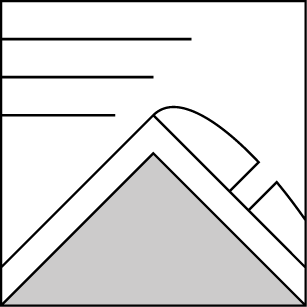Basic Information
Observation Details
Observation Date:
February 1, 2022Submitted:
February 1, 2022Observer:
NWAC Forecaster - Dallas GlassZone or Region:
Snoqualmie PassLocation:
Snow Lake Divide Area (Mostly below treeline, and E-S-SW aspects near treeline. )Signs of Unstable Snow
Recent Avalanches?
YesCracking?
IsolatedCollapsing?
None ExperiencedMedia/Attachments






Advanced Information
Weather Summary
Cloud Cover:
Mostly CloudyWind:
Moderate , NNew/Recent Snowfall:
Storm Total (HST) 18-20" (45-50cm) above 4000'.Snow showers most of the morning. Minimal new snow accumulation. Winds were moderate at ridgeline and blowing snow onto S aspects.
There were a handful of recent natural loose dry avalanches from very steep and rocky slopes. We triggered a few small loose dry sluffs as well. The only notable avalanche was an intentionally triggered storm slab on a very steep slope. It was only 4-6" deep and 15' wide.
Snowpack Observations
The new snow is generally right-side-up. A very obvious density change about 12-15" below the surface failed consistently in handpits. However, the overlying slab is so soft it did not propagate in larger column tests nor in small slope tests.
Once we crested into the near treeline band there were plenty of signs of wind transported snow. Textured surfaces, sharp cornices, blowing snow, and firm smooth pillows. Small wind-loaded test slopes did crack and fail. We did not venture into any large wind-loaded areas.
At the 1/30 interface, I was able to find small (1mm) near-surface facets at the base of the new snow. in a few locations. This was the exception rather than the rule. I typically found a very firm melt-freeze crust on southerly aspects and a facet-crust sandwich on northerly aspects. The facet-crust sandwich was very prevalent on N aspects above 4000' and easy to feel with a pole or with your hand. A thin (<1cm) crust (MFcr) capped 3-4" (8-10cm) of small facets over a much thicker crust (1/20). While these grains were obviously weak and failed in small column tests, they failed but did not propagate in extended column tests. So, where we traveled, we were able to see that weak snow structure survived the storm, but today we did not find any avalanches on this layer of concern.
Avalanche Problems
| Problem | Location | Distribution | Sensitivity | Size | Comments |
|---|---|---|---|---|---|
 Wind Slab
Wind Slab
|
|
||||
 Storm Slab
Storm Slab
|
|
Layer Depth/Date: 12-15" (30-35cm) storm snow density change |

